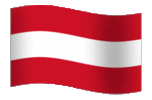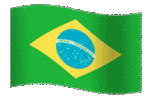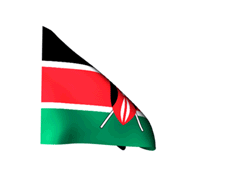NOTIFICATION MUST BE CLARIFICATORY OR CURATIVE IN NATURE TO APPLY RETROSPECTIVELY

In the case of M/s. L. R. Brothers Indo Flora Ltd. v. Commissioner of Central Excise (Civil Appeal No. 7157 of 2008), the Hon’ble Supreme Court of India, vide Judgment dated 01.09.2020 held that for a #notification to apply #retrospectively, it must be established that the previous notification had any omission, mistake or error in it and as a result, the #amended notification has been passed to rectify the said mistake. In absence of these essential ingredients, a #legislation cannot be considered to have a retrospective effect.
The subject matter of this case is concerning the M/s. L. R. Brothers Indo Flora Ltd. (‘Appellant’), which is a 100% Export Oriented Unit (#EOU) that is required to export all articles produced by it. As per the #ExportImport (#EXIM) Policy under Notification No. 126/94 Cus dated 3.6.1994(the Exemption Notification):
- Customs Duty exemption on inputs when finished goods have to be exported- EOUs are exempted from payment of customs duty on the inputs and materials that are imported for the purpose of being used in manufacturing articles to be exported.
- Customs Duty exemption on inputs when finished goods have to be sold domestically- EOUs are further exempted from payment of customs duty on the inputs and materials that are imported for the purpose of being used in manufacturing articles meant for domestic sales within the Domestic Tariff Area (DTA).
- Provided that the EOUs comply with the criteria and requirements given in the EXIM Policy.
- EOUs have to further obtain prior permission from the Development Commissioner under the EXIM Policy, to make DTA sales.
- Levy of Excise Duty on excisable finished goods in DTA- EOUs making DTA sales shall be charged excise duty on excisable finished goods.
- Levy of Customs Duty on non- excisable finished goods in DTA-In case of non-excisable finished goods, EOUs making DTA sales shall be charged customs duty on the inputs used in manufacturing the non-excisable finished goods at a rate equivalent to the rate of customs duty chargeable as if such finished goods were imported into India.
The said Exemption Notification was amended by Notification No. 56/01 Cus dated 18.5.2015(the Amendment Notification).As per the Amendment Notification:
- Levy of Customs Duty on non- excisable finished goods in DTA-In case of non-excisable finished goods, EOUs making DTA sales shall be charged customs duty on the inputs used in manufacturing the non-excisable finished goods at a rate equivalent to the rate of customs duty chargeable to inputs.
In this case, the Appellant continued to make DTA sales of non-excisable goods from 1998 upto December 2000, without obtaining the prior approval of the Development Commissioner and without maintaining the requisite net foreign exchange earnings as per the EXIM Policy.
In this regard, the Additional Commissioner issued a Show Cause Notice dated 16-03-2001 to the Appellant and adjudged that the DTA sales were made without permission of the Development Commissioner and in contravention of the EXIM Policy and therefore, Customs Duty is leviable on the said unauthorized DTA sales of non-excisable goods.
Thus, the Additional Commissioner, by way of Order 18-10-2001,confirmed the levy of Customs Duty on the final articles sold in DTA i.e. Rs.9,98,177.00 and a penalty of Rs.9,98,177.00 under Section 114A the Customs Act, 1962 (the Act). This Order was further confirmed by the Customs, Excise and Service Tax Appellate Tribunal (CESTAT), vide Final Order dated 17-7-2008 in a Customs Appeal.
Being aggrieved, the Appellant preferred an Appeal against the Order passed by the CESTAT before the Supreme Court and contented that as he had sold non-excisable goods in DTA, namely, cut flowers, so no excise duty can be levied upon it. Further, in such a case, as per the Exemption Notification, the customs duty is levied on the imported inputs used in manufacturing the non-excisable goods at a rate equivalent to the customs duty rate levied on the finished product as if it was imported. But in this case, there were no imported inputs used in manufacturing cut flowers and that the inputs were home grown, so, no customs duty could also be charged.
The Appellant further contended that as per the Central Board of Excise and Customs (CBEC) Circular No. 31/2001 Cus dated 24.5.2001, the provision in the Exemption Notification to levy customs duty on non-excisable goods at the rate equivalent to the customs duty rate levied on the finished product as if it was imported, is putting the floriculture EOUs at a disadvantageous position and thus, the Amendment Notification was issued to harmonize this issue. The Appellant thus claimed that the Amendment Notification is retrospective in nature.
While dealing with this issue, the Supreme Court analyzed the Exemption Notification and recorded the following observations:
- That the Show Cause Notice was issued to the Appellant prior to the issuance of the Amendment Notification.
- That the language employed in the Amendment Notification does not offer any guidance on whether the amendments made were to apply prospectively or retrospectively. It is a settled proposition of law that all laws are deemed to apply prospectively unless either expressly specified to apply retrospectively or intended to have been done so by the Legislature. The latter would be a case of necessary implication and it cannot be inferred lightly.
- That in order to call the Amendment Notification clarificatory or curative in nature, it would be required to show that there had been an error/mistake/omission in the previous notification, i.e. the Exemption Notification.But there is no mention in the Amendment Notification about any mistake or error that may have crept in the Exemption Notification that is being corrected by way of amendment.
- Therefore, it must be construed that the Government intentionally introduced the Amendment Notification to only change and determine the Customs Duty charging rate. Thus, the amendment brought in cannot be said to be clarificatory in nature.
- The Supreme Court further observed that the CBEC Circular does not mention that the earlier methodology in force was deficient or devoid of clarity in any manner. It rather says that the charging rates were being disadvantageous to the EOU units as compared to the DTA units.
- The Court observed that an essential requirement for application of legislation retrospectively is to show that the previous legislation had any omission or ambiguity or it was intended to explain an earlier act. In absence of the above ingredients, a legislation cannot be regarded as having retrospective effect.
That in view of the aforesaid observations and analysis of the language of the said Notifications, the Supreme Court held that the Amendment Notification could not be held to be applicable retrospectively. Thus, the Appellant was obligated to comply with the conditions prescribed under the EXIM Policy in order to avail the exemption and failure to do so must deprive the person of the exemption so granted. Therefore, the Apex Court upheld the decision of CESTAT to levy Customs Duty on the Appellant for the unauthorized DTA sales, at a rate equivalent to the customs duty rate levied on the finished product as if it was imported.
Lakshmi Vishwakarma
Associate
The Indian Lawyer
Edited by
Harini Daliparthy
Senior Associate
The Indian Lawyer




































Leave a Reply